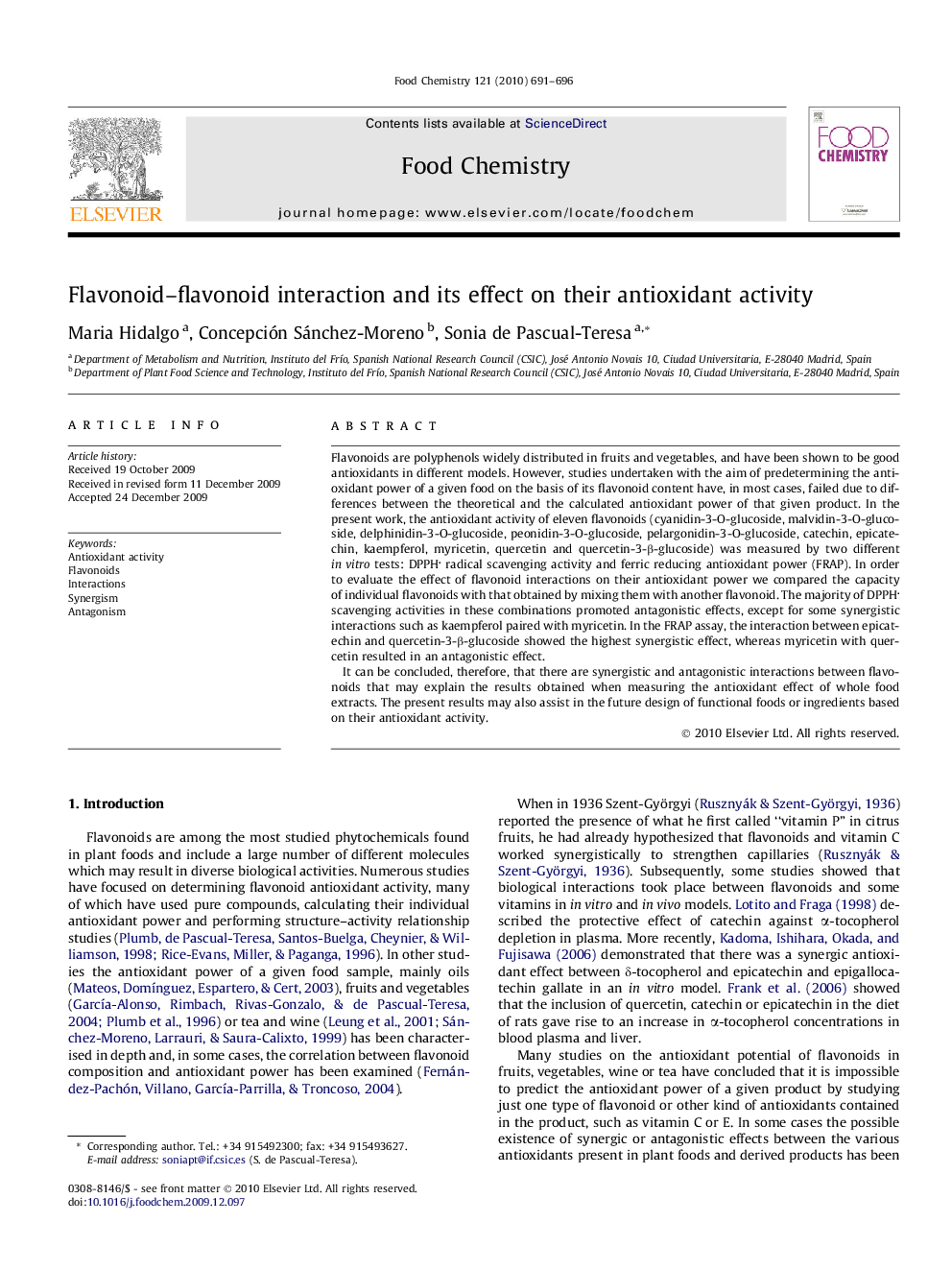| Article ID | Journal | Published Year | Pages | File Type |
|---|---|---|---|---|
| 1186631 | Food Chemistry | 2010 | 6 Pages |
Flavonoids are polyphenols widely distributed in fruits and vegetables, and have been shown to be good antioxidants in different models. However, studies undertaken with the aim of predetermining the antioxidant power of a given food on the basis of its flavonoid content have, in most cases, failed due to differences between the theoretical and the calculated antioxidant power of that given product. In the present work, the antioxidant activity of eleven flavonoids (cyanidin-3-O-glucoside, malvidin-3-O-glucoside, delphinidin-3-O-glucoside, peonidin-3-O-glucoside, pelargonidin-3-O-glucoside, catechin, epicatechin, kaempferol, myricetin, quercetin and quercetin-3-β-glucoside) was measured by two different in vitro tests: DPPH radical scavenging activity and ferric reducing antioxidant power (FRAP). In order to evaluate the effect of flavonoid interactions on their antioxidant power we compared the capacity of individual flavonoids with that obtained by mixing them with another flavonoid. The majority of DPPH scavenging activities in these combinations promoted antagonistic effects, except for some synergistic interactions such as kaempferol paired with myricetin. In the FRAP assay, the interaction between epicatechin and quercetin-3-β-glucoside showed the highest synergistic effect, whereas myricetin with quercetin resulted in an antagonistic effect.It can be concluded, therefore, that there are synergistic and antagonistic interactions between flavonoids that may explain the results obtained when measuring the antioxidant effect of whole food extracts. The present results may also assist in the future design of functional foods or ingredients based on their antioxidant activity.
